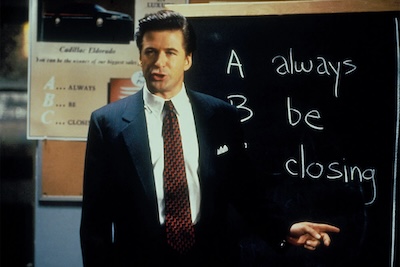WARNING: Episode 12 & 13 spoilers ahead.
MAX’s emergency room drama The Pitt has been consistently excellent from the first second Noah Wyle appears on screen listening to Robert Bradley on his ear buds. You can feel the exasperation of a Trauma Unit leader (Wyle’s Dr. “Robby” Robinavitch) attempting to manage an understaffed department of overworked doctors and nurses trying to deal with a standing room only waiting room of frustrated patients and the weight of offering quality care at a rational (but faster, by administration demand) pace.
The Pitt effortlessly (but painfully) dissects the strain of the competing goals between doctors and the administration. How can his team of physicians achieve high-quality patient satisfaction scores when those needing care have already been waiting six hours to be seen unless their ailments are acute? The series, without too heavy a hand, has been incisive in pointing out the many holes in the American health care system and the strain it puts on caregivers and patients alike.
I reviewed The Pitt around the halfway point of its inaugural season (each episode is told in real time over a grueling fifteen-hour shift). I was already impressed and remained so through episode eleven. Then came episodes twelve and thirteen. It’s always risky to heighten an already intense drama by adding a ripped-from-the-headlines disaster plotline. It can feel gimmicky and cheap when done wrong, but The Pitt avoids these potential traps by maintaining its tone and authenticity when the horror of a mass-casualty event elevates an otherwise typical (if brutal) day in the ER. In this case, the event is a shooting at a concert festival in Pittsburgh with an unknown number of critically injured, but early reports relay an “expect the worst” situation.
The frustrations, grievances, and personal struggles detailed through the first eleven episodes are set aside as the team assembles to organize the unit around the unspeakable horror heading for their doorstep. Wyle’s Dr. Robby goes through the mundane but critical system of using slap bands to identify each patient’s condition. Red bands mean the patient needs immediate attention, and pink is for those who are likely to die within an hour without treatment. Black and white striped bands are for DOAs. Shawn Hatosy’s Dr. Abbott explains that the hospital staff will not be practicing normal emergency room processes tonight. They will triage patients like they are in a war zone—no frills, no extra time, move as fast as possible, and don’t expect a break.
The hospital administrator and Dr. Robby get on the same page for the first time this season. She has sent out an SOS for extra staff, supplies, and equipment. The time spent arguing over the nursing shortage, budgets, and satisfaction scores will have to wait for another day. Today, too many lives are at stake to consider all the issues within their trauma unit and the medical profession at large.

As the dead and wounded arrive, the team of doctors, nurses, and even the cleaning staff (there’s a lot of blood to mop up) put forth their best efforts in what becomes an increasingly impossible situation. Confidence in the staff’s ability to save those patients that can be saved waivers, unorthodox DIY methods are used as supplies dwindle. New residents (some on their first day) make mistakes but steel themselves as best they can to keep going. The charge nurse (the astounding Katherine LaNasa), who was assaulted earlier by a patient who could no longer stand his wait time, dismisses her black eye and broken nose as she attempts to be the glue that keeps the chaos at play from becoming greater chaos—a task beyond thankless or even reasonable.
What is on display in this trauma center isn’t just the humanity of those suffering from grievous injuries but also of the professionals trying to save every possible life they can under enormous pressure and constraints. Episodes twelve and thirteen provide a view into the best of what we, as people, with all our imperfections, have to offer under the worst of conditions. Most of the staff has been on duty for more than ten hours before the worst case scenario falls into their arms, but there is no time to be tired. Thankfully, adrenaline is a hell of a drug.
Unfortunately, adrenaline alone is not enough to save everyone who is rushed into the ER. Circumstances worsen as the volume of patients increases. Staff members managing the entrance to the hospital wonder when the onslaught of wounded will end. The supply issue workarounds are becoming increasingly “unorthodox,” as one veteran surgeon states. Doctors and other staff members begin to donate their own blood while attending to patients, due to a shortage of O negative. Patients with multiple wounds are having their conditions written on their foreheads when the wristband charts the patients are wearing run out of space. The already enormously high level of anxiety is heightened even further when a SWAT team is deployed to the hospital out of concern that the shooter, who is still on the loose, might attempt an attack on the trauma center itself.
Long story short, these working conditions are approaching the threshold of utter madness.

Yet, amidst all the grim surroundings, the sight of the doctors and nurses pushing themselves beyond what they surely would have thought was their capacity when the day began, doing everything possible to rise to the occasion (Taylor Dearden’s performance as the neurodivergent Dr. King is particularly impressive), and using every bit of ingenuity they possess to save lives, is remarkably moving and inspiring. We live in a world where, far too often, empathy, compassion, and competence are undervalued. That is not the case with The Pitt; episodes twelve and thirteen are outstanding examples of what the best of us can look like when put into action.
Still, we all have a breaking point, and when Dr. Robby fails for the second time to save someone close to Jake (Taj Speights), a young man who is like a son to him, Robby’s breakdown at the end of episode thirteen exposes the limits of the human condition. Sure, one could easily argue that the “coincidence” of this second failure being on the anniversary of the first to be a heavy ask of the audience, but I’ll be damned if Wyle doesn’t sell the hell out of it. His loss of composure, shortness of breath, and his past and present grief roll over him like a wave that can no longer be stemmed by his admirable fortitude and his unhealthy denial. If The Pitt doesn’t submit episode thirteen as Wyle’s case to the Academy for Emmy consideration, then my only guess is that the final two episodes will be a tour de force of a kind rarely seen. Wyle digs deeper than I’ve ever seen him go before. As Wyle tells Jake, “I tried, I really tried,” those five simple words cut to the bone and exemplify everything good about this terrific new series. Sometimes, our best isn’t good enough, but it’s all that we have, and when our best falls short, the inability to accept the outcome is as devastatingly human as it gets.








![We Could Go See BOOP! And Predict the Tony Awards! [PODCAST]](https://thecontending.com/wp-content/uploads/2025/06/tonys-120x86.png)
